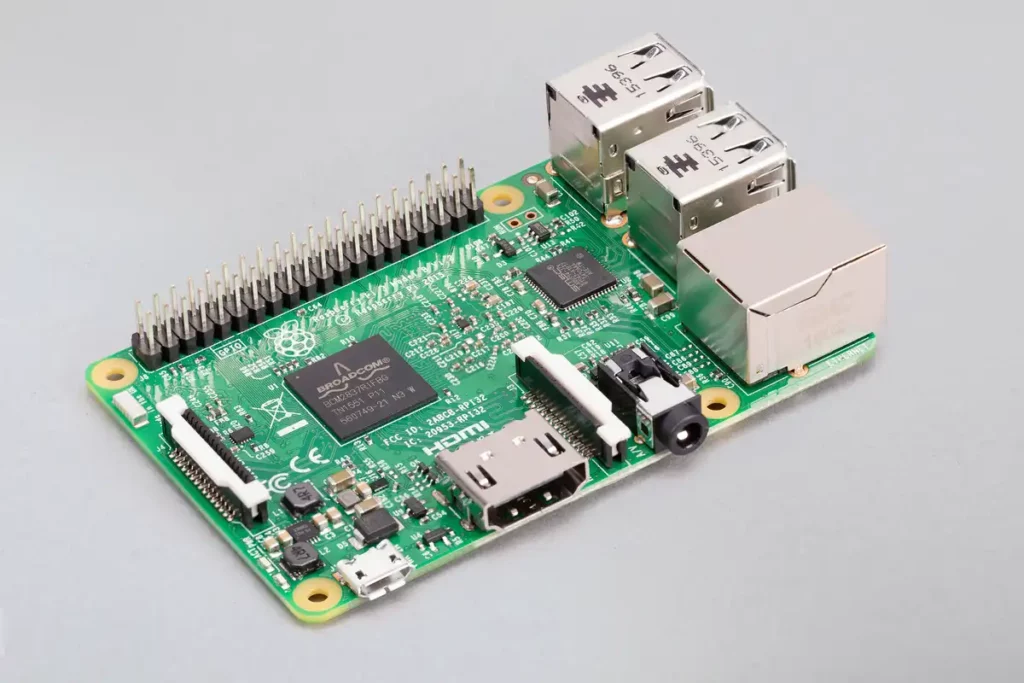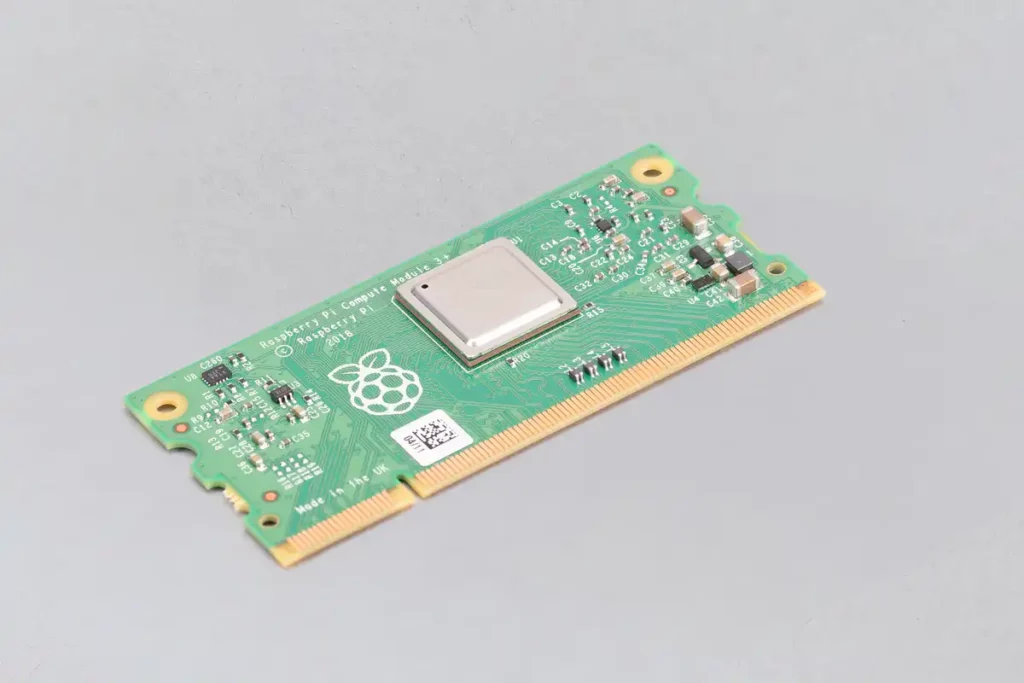An ode to Raspberry Pi – 12 years of Tasty Chips Electronics
Hi customers and synth enthousiasts. Let’s do something we rarely do. Let’s look back. It’s almost Christmas, so it seems like a good time.
12 years ago I (Pieter van der Meer) founded Tasty Chips Electronics. The focus was always on hardware synthesizers, and we made and sold a lot of models during the first years, but only in 2017 we established our name. This was the time of the GR-1: our breakthrough synth. The first proper hardware granular synth. A whole 6 years before hardware granular became “the popular thing to do”. What made this machine so successful?
There were a lot of VSTs. There were simple 1-grain “microloop” hardware synths, and there was the Collidoscope: a landmark academic project that was highly influential for us, because it effectively combined a horizontal slider with a large sample display. The GR-1 took that idea, and made it practical. The Collidoscope’s fader, while ingenious, was totally custom and really difficult to produce. The GR-1 used standard components, and it was small enough to throw it in your backpack and take it with you.

Seen above: the Collidoscope granular machine / installation: http://collidoscope.io/
But besides these practical factors, what was the key ingredient of the GR-1? Quite simply it was the Raspberry Pi 3, and our knowledge on how to properly use it. I was already involved in making touchscreen interfaces for “virtual pipe organs”. The founder of this organ company had always followed the trends in technology very well and understood when to jump on them. My work on those touchscreens proved to be useful, and eventually formed the basis for the GR-1. The Raspberry Pi was the enabling technology. A large true color screen, proper sample buffers (minutes) instead of the mere seconds you got on most hardware samplers, and massive polyphony (granular clouds even bigger than some apps) enabled by the Raspberry Pi’s multi-core CPU, with SIMD units. (Ok, techno talk galore, yes, but read on 😉 ).

Above: The back of our GR-1, which clearly shows the Ethernet port and the 4 USB A ports of the Raspberry
The idea of including a standard “PC” in a synth was not new. The Hartmann Neuron did that long long ago. Even the Raspberry Pi, if you can call it a PC, had been used in hobby project synths before.. just never in an actual production synth. To the ones in the know, the Pi offers excellent quality and serviceability, because it’s a standard component, and monolithic too. While others mistook it for the much smaller and far less powerful Arduino, or thought that made the GR-1 boring or overpriced, smart people knew that being Pi-based was an important asset. I recall Sonicstate catching on fast to this fact in one of their shows. Some later manufacturers, obviously inspired by us, even tried to hide that they are Raspberry Pi-based.

In the photo above: the venerable Raspberry Pi 3B(+), as used in the GR-1.
Speaking of which.. Imitation is perhaps the highest form of flattery. And boy did others take inspiration from the GR-1. The first, and most notable, was no other than Tatsuya Takahashi, Korg’s chief synth designer. While residing in Berlin in 2018, he and E-RM made the Red Bull Granular Convolver, and took it one step further: they used the Raspberry Pi Compute Module. This is basically a smaller Pi, that allows it to put it in even smaller synths, and also allows for customization. While this very nice looking product didn’t enter production, it definitely served as a basic hardware platform for the later Korg models like the Wavestate.
Here’s a link to the Raspberry Pi success stories page: https://www.raspberrypi.com/success-stories/korg-synthesizers/
Here’s a Synth Anatomy article on it: https://synthanatomy.com/2020/02/meet-the-lead-developer-of-the-korg-wavestate-synthesizer.html
Korg has been using Pi’s ever since and it has served them well.

Above: the Raspberry Pi Compute Module 3+, as used in our ECR convolver, and in various Korg synth models
6 years after the GR-1 there are now loads of synths based on the Pi. Beetlecrab and Torso Electronics also jumped on the granular bandwagon, while we of course have the undisputed king of granular instruments: the GR-MEGA. Our ECR and Integral are also based on the Pi, in various forms. There are Eurorack companies that have used the Pi in various forms too. Some of them have opted out and went for microcontrollers, which may be understandable, since they can be more predictable, and can be easier to develop for in some cases.
Even if we are not alone anymore with our Pi-based synth, and also no longer alone in the granular niche, the flattery of course is really nice, and the Raspberry Pi will certainly make the world of synth development a brighter place in the future. It will no longer be a distinguishing factor: almost all digital synths requiring some “oompf” will be based on a Pi or maybe on a clone/competitor of the Pi. Interfacing and workflow will no doubt become more important factors in the era of great sounding, portable synthesizers. How exactly that will evolve is uncertain, and that’s what keeps it so exciting.
Perhaps a look at this evolution: This Is Not Rocket Science: https://www.thisisnotrocketscience.nl/, known from their massive Phenix IV semimodular, are said to be working on a videosynth based on hardware from Pi competitor Rockchip.
Ordering and production
Some other news and housekeeping info.
- The new batch of Integrals should start final assembly and test mid December. There’s also a nice surprise coming. 🙂
- The GR-MEGA is being produced and the waiting line is about 7 months now. We’re taking measures to speed it up and hope these will start taking effect in February. Use the production time table at any time to look up when your order is due: https://www.tastychips.nl/gr-mega-support-page/#TimeTable
- At least one new firmware release for the GR-MEGA should be out this December. The firmware seems stable now. We’ve not heard about crashes from users anymore. Firmware 1.3 could focus on USB C audio, but we’re not sure yet.
- A soft cover for the GR-MEGA is coming. Details to be announced.
- GR-1 firmware 3.0 is coming along nicely. The GUI and file handling are nearly done. We’ve not managed to backport the GR-MEGA firmware, but you’ll still get the promised intuitive file handling and GUI improvements, and a couple of important multi-timbral fixes and features.
